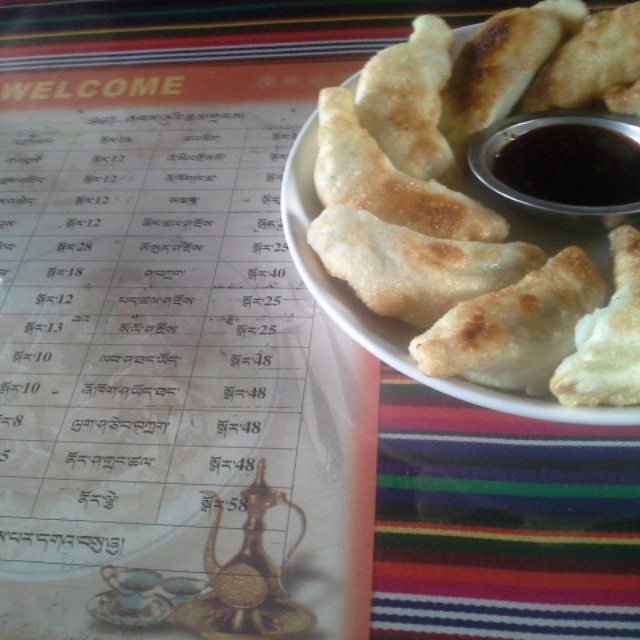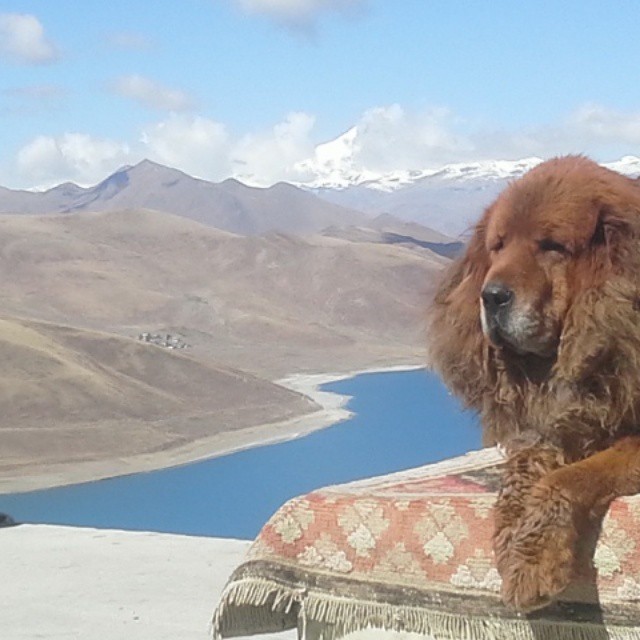Last summer, I continued my trend of going to off-the-beaten-path places and visited Tibet, an amazing place that feels as far away as you can get from China,from a political, geographical, scenic, and cultural standpoint.
However, since the defeat of the Tibetan army in 1950, Tibet has been considered part of the People’s Republic of China, albeit as an autonomous region, despite continuous pleas for independence. Furthermore, it’s no secret that China has been actively trying to erode Tibetan culture at the expense of human rights and make it more in line with the rest of Chinese culture. And herein comes the difficulties with visiting it.
Note: This is not intended to be a guide to what to see in Tibet or an overview of attractions; this will come at a later point.
Booking a Tour
Unless you’re a Chinese citizen, you will be required to visit Tibet as part of a tour. While there is no official resource (that I know of) that lists all Tibet tour operators, you should of course research any organization before booking with one, and try to find one actually based in Tibet, rather than outside of Tibet (in order to ensure more money goes to the Tibetan people).
I booked with Budget Tibet Tour as their price was affordable and had good reviews. The tour was $780 (not including tips), included a Tibet visa (mandatory to fly into Tibet), lodging, guides, national park entry fees, and transportation. Food was not included. Unlike certain other countries, you will have a fair amount of independence and freedom, as you will be free to roam around and explore at night, and be given a time and place to meet the next morning. Obviously, like any guided tour, the sky is the limit for cost, depending on how luxurious you want it to be.
Getting there
While your tour company will often offer to take care of this for you, it is far cheaper to handle it yourself. You basically have two options: take a train there, or fly there. Though I can’t speak from personal experience, if time is not an issue, the train is supposed to be an incredible experience, and you can say that you’ve been on the highest railway in the world (so much that they will pipe in oxygen during high altitudes). The only downside is that it can take up to 48 hours from many major cities in China.

For those of you on a tighter schedule, you will want to fly into Lhasa Airport (LXA). As the only major carriers flying here are Air China, China Southern, and China Eastern, your route will most likely be either on Star Alliance or SkyTeam (sorry oneworld!) The good news is that Air China always has a plethora of award seats available, so if you have United miles (or miles with another Star Alliance carrier), it’s actually not too hard to book an award flight here, as I did last year.
Getting a Chinese Visa
As Tibet is legally part of the People’s Republic of China, you will also need a Chinese visa (assuming your country of citizenship requires it). However, if you’ve done this before (but now have an expired visa), it may be a little more difficult this time. Typically when getting a visa for China (or any other country requiring a visa), the process is to fill out an application, attach proof of airfare and lodging, and give or send it to your closest embassy/consulate.
But when it comes to Tibet, China does not want to encourage Tibet tourism, and therefore if you put Tibet on your China visa application, it will most likely be denied. Therefore, I would strongly recommend booking a fully refundable ticket to somewhere (else) in China, printing out the confirmation, and then canceling your reservation (if you don’t want to put that much on your credit card at once, as refundable tickets can be quite expensive, you can also cancel a nonrefundable for free within 24 hours of booking your ticket if you book on a US-based carrier). You can then do the same for hotel lodging.
Money
Tibet is part of China, and therefore uses the RMB. Major banks and ATMs can be found in bigger cities like Lhasa, less so in other parts. Credit cards are not very widely accepted.
Language
As you will be with a guide for most of the tour, you will also have a translator for all your needs. While older residents only speak Tibetan (a fairly difficult language to learn which will not have much use to you otherwise, though the alphabet will help slightly in Bhutan), younger residents also can speak Mandarin, and if you can speak a little Mandarin, you will be able to converse slightly with local residents. Very little English is spoken, and even tour guides’ English can be difficult to understand at times.
Politics/Sensitive Topics
Avoid discussing any of the following topics with your tour guides: Tibetan independence, political status of Tibet, exile of the Dalai Lama, the Chinese government, the relationship between the Chinese government and Tibet, decreased human rights for the Tibetan people, and so on. The police state is even more prevalent in Tibet than in the rest of China, and if you ask about one of these topics, at best you will get nervous laughter from your guide, at worst, a stern lecture. Many guides are constantly operating under the assumption that the Chinese government is monitoring them, and they can be severely punished for speaking out.
Health/Safety
As is often the case with police states, there is practically no risk of any violent crime happening to you. On top of this, Tibetan people are among the friendliest in the world, and are thrilled to have non-Chinese visitors (and may constantly ask to take photographs). Your bigger concern is the air. And I don’t mean air quality, which would normally be a concern in many other parts of China. Rather, Tibetan air is incredibly pure and clean. The issue here is elevation. When you land in Lhasa, you’ll be at an elevation of 11,710 feet, and regularly be at elevations far higher than that throughout your trip. If you have any breathing issues whatsoever (such as asthma), bring all necessary medication and more. On top of that, it may be a good idea to buy some of the canned air sold at most stores in Lhasa in case of an emergency. Be careful of doing anything that exerts too much physical effort at once; I had to catch my breath after 15 seconds of playing soccer with some kids in town.
Food
Most restaurants serve traditional Tibetan cuisine, though there are some restaurants serving Sichuan, Nepalese, and Indian cuisines, all reflecting their proximity to Tibet. Yak meat is especially prominent in Tibetan cuisine, though thanks to the Buddhist influence, it’s not impossible to get by as a vegetarian. What will be hard is if you only like eating “Western” food, as there is very little Western influence or restaurants in Tibet (though there are some knockoff versions of popular Western snacks sold in stores). Make sure to try butter tea at least once! Most meals will cost around $5-$6 USD.

Fried yak momos (dumplings)
So is Tibet for you? If you don’t mind getting out of your comfort zone, sacrificing some of your autonomy and exploring somewhere that doesn’t have the amenities you may be used to (but has more than enough culture, history, and beauty to make up for it), then yes. And more importantly, you may walk away being able to say you’ve seen a Tibetan mastiff in Tibet!


